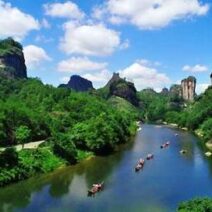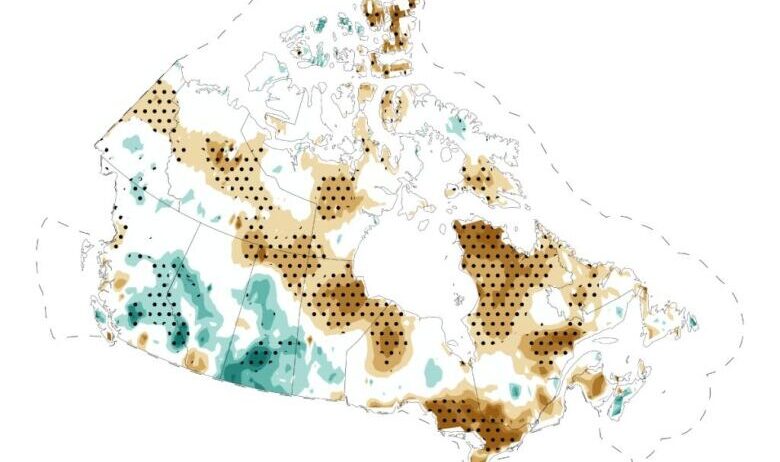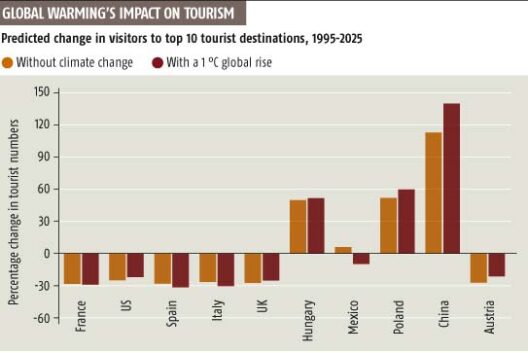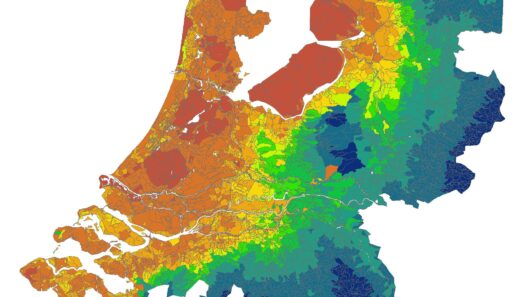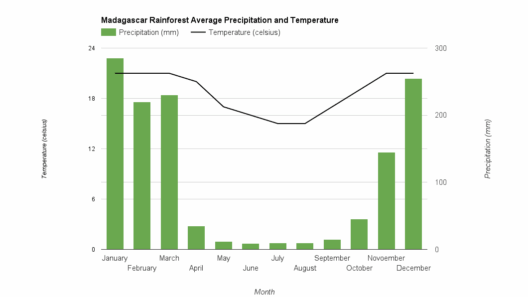Canada, often perceived as a bastion of snow and ice, is a land of remarkable climatic diversity that transcends the cold, expansive wilderness we typically associate with winter. From the temperate rainforests of British Columbia to the arid plains of the Prairies, Canada’s climate unfolds like a vibrant tapestry, with each region depicting its own narrative woven from threads of temperature, precipitation, and geographical nuances. Understanding this multifaceted climate is crucial as it offers insights into the ecological pressures faced by this vast nation.
The nation stretches from the Arctic tundra in the north to temperate zones in the south, creating a mosaic of climatic conditions that shape the lives and cultures of its inhabitants. The extreme cold of Northern Canada—an unforgiving realm of permafrost and polar nights—presents formidable challenges for flora and fauna. Here, life finds a way to endure the harshness. For instance, the resilient Arctic poppy blooms defiantly against a backdrop of ice and snow, an emblem of hope amidst adversity.
Transitioning southward, one enters the boreal forest zone, which resembles a green ocean of coniferous trees swaying in the wind. This region is vital for carbon sequestration, acting as a buffer against climate change and housing a plethora of wildlife. The boreal forests are characterized by a brief but intense growing season. Here, the climate oscillates dramatically as winter releases its grip, ushering in a vibrant display of life. Birds return, insects reemerge, and human activity flares up, creating a vibrant tableau that encapsulates the cyclical dance of nature.
Moving further along the climatic spectrum, the Prairie provinces reveal the agricultural heart of Canada. The climate here diverges into a semi-arid expanse, with hot summers and cold winters—conditions that profit both the agriculture and livestock industries. The undulating landscape, peppered with golden fields of wheat and barley, tells stories of resilience and adaptation. Farmers, guided by the seasons, navigate the challenges posed by droughts and unpredictable weather patterns, reminiscent of a sailor charting a course through treacherous waters.
As one traverses even further east, the maritime climate of Atlantic Canada comes into view. The influence of the Atlantic Ocean imbues the region with ample precipitation and moderate temperatures. This maritime climate fosters lush landscapes sprinkled with unique flora, as well as vibrant coastal ecosystems. Here, the rugged shores become canvases painted with the strokes of crashing waves, resilient lighthouses, and communities deeply tied to the sea. The popular Acadian forests thrive amidst the fog, intertwining the remnants of colonial history with the natural world.
The coastal climate of British Columbia, particularly in areas like Vancouver, presents another paradigm of Canadian weather, characterized by its mild, rainy winters and dry summers. This climate breeds temperate rainforests that teeming with life, from towering Douglas firs to the elusive mountain goat navigating steep cliffs. The region’s climate serves as a crucial habitat for migratory species and a significant carbon sink—elements that underscore the pivotal role this area plays in combatting climate change.
Yet, beneath the varied beauty of Canadian climates lies a stark reality. Climate change is rendering traditional weather patterns increasingly erratic, unraveling the threads of stability that have long been woven into the fabric of the Canadian environment. Warmer winters lead to diminished snowpack, threatening winter sports and the ecosystems that depend on reliable ice and snow coverage. Indigenous communities, often the stewards of the land, find their ancestral practices threatened as traditional weather signals falter.
Additionally, the effects of climate change manifest in the form of rising sea levels affecting coastal communities, increasingly severe storms battering the eastern provinces, and prolonged droughts across the Prairie plains. Such alterations jeopardize food security, disrupt ecosystems, and call into question the delicate balance of human activity and natural processes. Canadian cities grapple with these challenges, implementing climate action plans to mitigate issues that threaten both urban and rural centers. The interplay of policy and local action aims to reforge the relationship between Canadians and their changing environment.
Delving deeper, the interconnection between climate change and biodiversity becomes apparent. Canada’s vast wilderness serves as a sanctuary for many species that are already feeling the pressures of changing habitats. From the polar bear navigating shrinking ice floes to the monarch butterfly struggling against shifting migratory patterns, the intricate web of life is increasingly fragile. Each species plays a role much like a note in a grand symphony; the disappearance of any note can alter the harmony.
This intricate rapport with nature is the essence of Canada. The diverse climates shape not only the natural environment but also the cultures and identities of its people. The Indigenous populations of Canada, for instance, possess profound connections to these landscapes, passed down through generations. This cultural richness is both a testament to the resilience of the human spirit and a call to action to protect these climates for generations to come.
In conclusion, Canada’s climate is far more than just snow and ice; it is a complex tapestry of realms bespeaking the majesty and fragility of nature. As climate change reshapes the landscape, it compels citizens and policymakers to forge a sustainable relationship with their environment. Understanding the deep and nuanced climates across the country is foundational for safeguarding Canada’s unique ecological heritage—a task that binds all Canadians together in collective stewardship over this extraordinary land.
